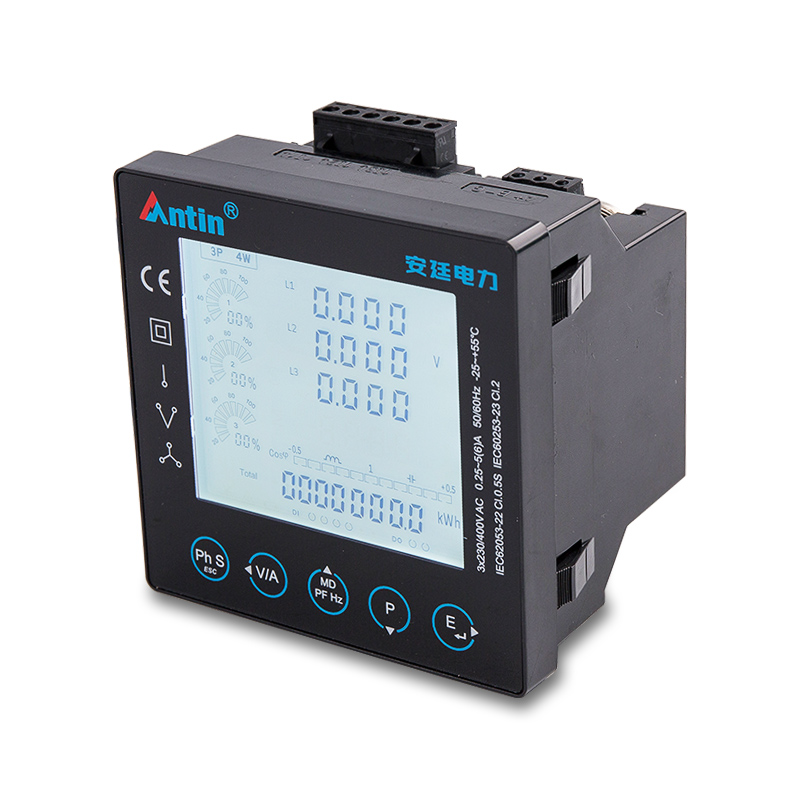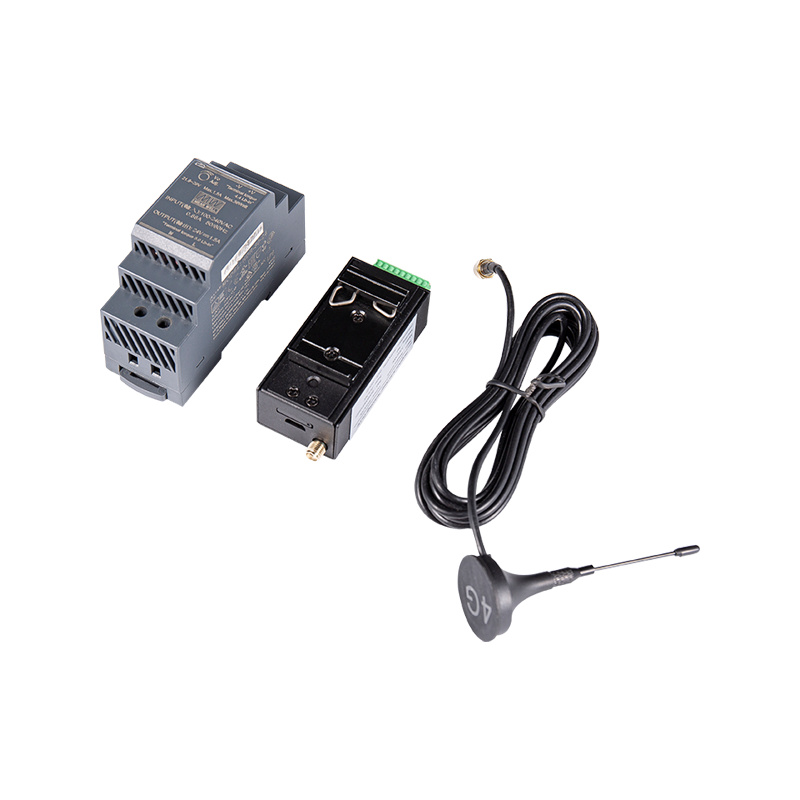Choosing the Right Multifunction Meter for Industrial and Home Use
1. Understanding Multifunction Meters
1.1 What is a Multifunction Meter?
A Multifunction Meter is a versatile electrical measurement tool designed to monitor and record multiple parameters of electrical systems. These meters can measure voltage, current, power, energy consumption, frequency, and other electrical characteristics in real-time. They are widely used in industrial environments, commercial settings, and residential households due to their ability to provide accurate, comprehensive monitoring in a single device. The use of a Multifunction Meter enables users to optimize energy usage, prevent electrical faults, and maintain safety standards efficiently.
- Measures multiple electrical parameters simultaneously.
- Suitable for both industrial and home applications.
- Helps in energy monitoring and fault detection.
- Advanced models support data logging and remote monitoring.
1.2 Key Features of Multifunction Meters
The key features of a Multifunction Meter include accuracy, reliability, and user-friendly interfaces. Modern meters offer LCD or LED displays, programmable alarms, and the ability to interface with software for data analysis. High-end meters also provide advanced functions like harmonic analysis, load profiling, and integration with automation systems. Understanding these features is essential for selecting the right meter according to specific industrial or residential needs.
- High measurement accuracy and precision.
- Data storage and retrieval capabilities.
- Alarm functions for abnormal electrical conditions.
- Compatibility with industrial automation systems.
1.3 Differences Between Multifunction Meters and Smart Meters
While both Multifunction Meters and smart meters measure electrical parameters, they differ in scope and functionality. Smart meters are primarily focused on energy consumption monitoring and remote communication, whereas multifunction meters offer a broader range of real-time measurements and diagnostics. Understanding these differences helps in selecting a meter suitable for specific applications, whether it’s detailed energy management in a factory or monitoring household consumption.
1.3.1 Accuracy and Precision
- Multifunction meters provide higher measurement precision for multiple electrical parameters.
- Smart meters mainly focus on energy billing accuracy rather than real-time diagnostics.
1.3.2 Data Logging and Connectivity
- Multifunction meters offer extensive data logging and historical analysis.
- Smart meters are typically limited to remote energy reporting.
1.3.3 Cost Considerations
- Multifunction meters can have higher upfront costs but offer extensive monitoring capabilities.
- Smart meters are cost-effective but provide limited functionality.
2. Selecting the Right Meter for Industrial Use
2.1 Factors to Consider in Industrial Settings
Selecting the correct industrial Multifunction Meter recommendation involves understanding the operational demands of your facility. Industrial meters must handle high loads, operate in challenging environments, and meet strict safety standards. Factors such as load capacity, voltage range, temperature tolerance, and compliance with industrial certifications are critical. Investing in the right industrial meter ensures accurate monitoring, reduces downtime, and enhances overall operational efficiency.
- Load capacity and voltage range to match equipment requirements.
- Safety certifications for industrial compliance.
- Durable construction for harsh environments.
- Ease of integration with control and monitoring systems.
2.2 Recommended Industrial Multifunction Meters
Industrial settings require meters that can reliably monitor multiple parameters while offering robust performance. Selecting the right meter involves evaluating accuracy, durability, and additional features like data logging and remote connectivity. Recommended models prioritize comprehensive measurement capabilities and can be customized for complex industrial applications.
- High-precision current and voltage measurement.
- Support for harmonic analysis and energy profiling.
- Integration options with PLCs and SCADA systems.
2.3 Comparing Industrial Multifunction Meter Prices
Comparing multifunction meter price comparison is essential for budget-conscious industrial users. Prices vary based on measurement capabilities, brand-independent features, and advanced functionalities. Understanding the price-performance ratio helps in making informed purchasing decisions without compromising on essential features.
- Basic meters for standard monitoring are cost-effective.
- Advanced meters with data logging and automation support have higher costs.
- Consider long-term ROI when evaluating prices.
| Meter Type | Price Range | Key Features |
| Basic Industrial Meter | $150-$300 | Voltage, current, power |
| Advanced Industrial Meter | $400-$800 | Data logging, harmonics, remote connectivity |
| Premium Industrial Meter | $900-$1500 | Full parameter monitoring, automation integration |
3. Choosing a Multifunction Meter for Home Use
3.1 Understanding Home Energy Needs
For residential applications, understanding home energy consumption is crucial. A home multifunction meter installation guide helps homeowners track electricity usage, detect anomalies, and optimize energy efficiency. These meters offer insights into usage patterns and allow for informed decisions regarding energy savings and appliance management.
- Monitor total energy consumption in real-time.
- Identify high-usage appliances for optimization.
- Support energy-saving initiatives and load balancing.
- User-friendly displays suitable for home users.
3.2 Installation Guide for Home Multifunction Meters
Proper installation of a home multifunction meter installation guide is critical for accurate measurements. Homeowners should follow guidelines for safe placement, correct wiring, and connection to the main electrical panel. Ensuring proper installation prevents inaccurate readings and enhances the lifespan of the meter.
- Select a safe location away from moisture and heat.
- Connect according to manufacturer instructions and safety standards.
- Use appropriate circuit breakers and fuses.
- Perform initial testing to confirm accurate readings.
3.3 Popular Home Multifunction Meter Models
Several home meters are designed for user-friendly monitoring while providing essential electrical parameters. These meters focus on ease of use, compact design, and sufficient measurement capabilities to optimize household energy management.
- Single-phase energy monitoring meters.
- Compact devices with LCD displays for easy reading.
- Support for real-time usage alerts.
4. Calibration and Maintenance of Multifunction Meters
4.1 Why Calibration Matters
Proper calibration ensures that a multifunction meter calibration methods provide precise and reliable readings. Calibration aligns the device's measurements with standardized reference values, reducing errors and maintaining accuracy. Regular calibration is vital in both industrial and home environments to ensure safety, efficiency, and compliance with electrical standards.
- Maintains accuracy over time.
- Prevents measurement errors that can affect operational decisions.
- Ensures compliance with electrical regulations.
4.2 Step-by-Step Multifunction Meter Calibration Methods
Following standardized multifunction meter calibration methods ensures reliable readings. Calibration procedures involve comparing meter readings against known reference values, adjusting for deviations, and documenting results for quality control. Proper documentation ensures repeatability and traceability.
- Check initial readings against a calibrated reference meter.
- Adjust the meter using the manufacturer's calibration interface.
- Perform multiple measurements to verify consistency.
- Document calibration results for future reference.
4.3 Routine Maintenance Tips
Routine maintenance of multifunction meters prolongs their life and ensures consistent performance. Maintenance includes visual inspections, cleaning, checking connections, and software updates for smart-enabled meters. Proper maintenance reduces errors, prevents damage, and ensures optimal functionality.
- Inspect wiring and connections for wear or corrosion.
- Clean meter surfaces and displays regularly.
- Update firmware or software if applicable.
- Schedule periodic recalibration as needed.
5. Final Tips for Choosing the Right Multifunction Meter
5.1 Evaluating Your Needs and Budget
Assessing your energy monitoring requirements and budget is the first step. Consider the parameters you need to measure, the environment in which the meter will operate, and your long-term energy management goals. Balancing cost and functionality ensures you select a suitable device without overspending.
- Identify essential measurement parameters.
- Consider the operational environment (industrial or home).
- Estimate budget vs. feature requirements.
5.2 Making an Informed Purchase Decision
When making a purchase, compare features, prices, and warranty terms. Understanding the differences in measurement accuracy, connectivity options, and maintenance requirements will guide you toward the right multifunction meter choice.
- Compare meter specifications and capabilities.
- Check long-term support and warranty.
- Evaluate cost-effectiveness over the device lifespan.
5.3 Future-Proofing Your Meter Choice
Consider potential future needs, such as expanded measurement parameters, integration with smart home systems, or industrial automation. Choosing a flexible and scalable multifunction meter ensures your investment remains relevant as technology evolves.
- Select meters with modular and upgradable features.
- Check compatibility with emerging communication protocols.
- Ensure sufficient measurement range for future expansion.
FAQ
What is the difference between a Multifunction Meter and a smart meter?
A Multifunction Meter provides comprehensive monitoring of multiple electrical parameters such as voltage, current, power, and harmonics, whereas a smart meter primarily focuses on energy consumption reporting. Multifunction meters offer real-time data, data logging, and advanced diagnostics, making them ideal for industrial and detailed residential monitoring.
How do I calibrate a Multifunction Meter?
Calibration involves comparing the meter's readings against a standard reference meter and adjusting it for any deviations. Follow the multifunction meter calibration methods provided by the manufacturer, including step-by-step procedures to ensure accuracy. Regular calibration maintains measurement reliability and ensures compliance with electrical standards.
Which Multifunction Meter is best for home use?
For home use, select a meter that offers essential parameters like voltage, current, and energy consumption. Refer to a home multifunction meter installation guide for safe installation. Choose meters with user-friendly displays, compact designs, and reliable accuracy to monitor household energy efficiently.
What should I consider when buying an industrial Multifunction Meter?
When purchasing an industrial meter, consider load capacity, voltage range, safety certifications, and environmental durability. Look for recommended models that meet your operational needs and compare prices using multifunction meter price comparison to ensure cost-effective investment.
How can I ensure long-term accuracy of a Multifunction Meter?
Regular maintenance and calibration are crucial for maintaining accuracy. Follow multifunction meter calibration methods, inspect connections, clean the device, and perform routine checks. Proper maintenance ensures reliable performance and extends the meter's lifespan.






